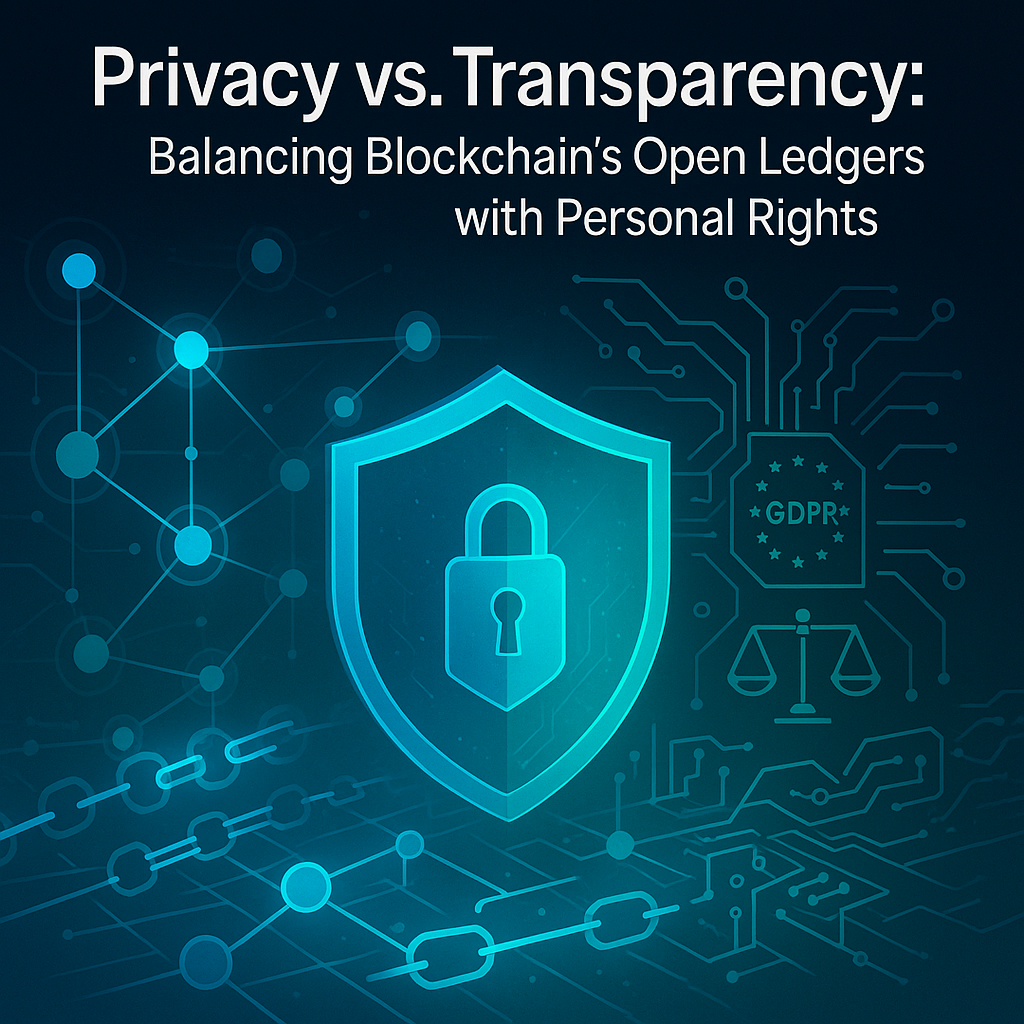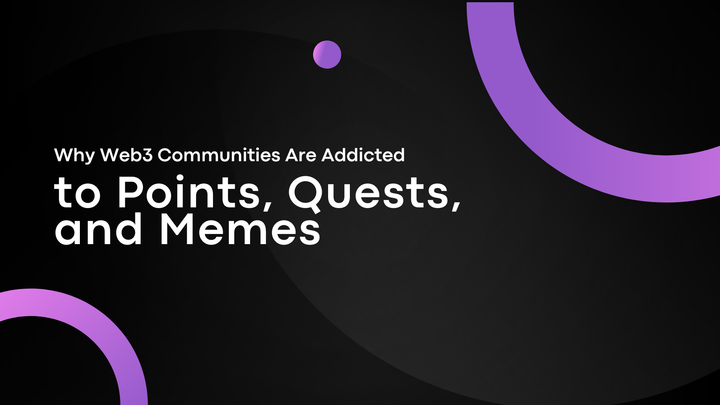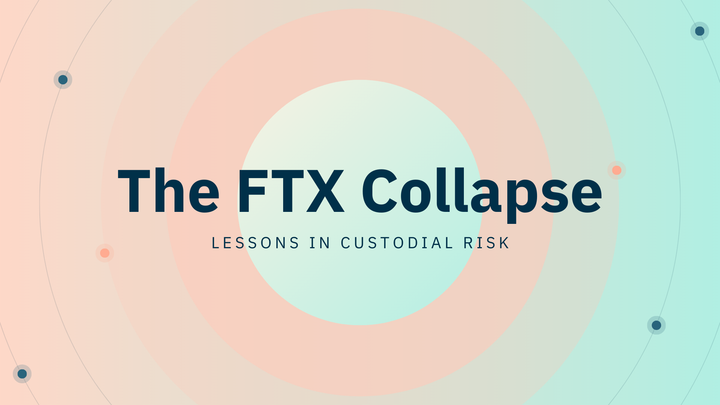Privacy vs. Transparency: Balancing Blockchain’s Open Ledgers with Personal Rights

Blockchain technology, particularly public blockchains, has transformed trust and accountability through decentralized, transparent ledgers. Yet, this transparency clashes with the fundamental right to privacy, posing a complex challenge in the digital age. This article explores the privacy-transparency tension for an advanced/technical audience, summarizing cryptographic innovations, regulatory challenges, and future directions.
Background: The Blockchain Privacy Paradox
Public blockchains, like Bitcoin and Ethereum, are decentralized ledgers where transactions are recorded transparently across a network of nodes, ensuring immutability and auditability (Dock Labs). Transparency fosters trust via cryptographic security and consensus mechanisms, eliminating reliance on intermediaries (IBM). However, it exposes transaction details—addresses, amounts, and timestamps—making them globally accessible and permanent, conflicting with privacy principles like data minimization and the right to erasure (ResearchGate). This transparency enables accountability but risks deanonymization and violates data protection laws like the GDPR (Oxford Academic).
The right to privacy, enshrined in frameworks like the Universal Declaration of Human Rights and GDPR, is critical in digital contexts where personal data faces surveillance and breaches (Wikipedia). Blockchain’s pseudonymity, using cryptographic addresses, is often insufficient, as transaction graph analysis can link addresses to real-world identities (Thesai). Cryptographic and regulatory strategies aim to reconcile these conflicts, balancing technical and societal dimensions.
Core Conflicts: Transparency vs. Data Protection
Public blockchains’ features—transparency, immutability, and public access—oppose GDPR principles. These conflicts include:
- Right to Erasure (Article 17): Immutability prevents data deletion, contradicting the “right to be forgotten.”
- Right to Rectification (Article 16): Immutable records cannot be modified to correct inaccuracies.
- Data Controller Identification (Article 4): Decentralized networks obscure data control, complicating accountability.
Mitigation strategies include off-chain storage, where only hashes are stored on-chain, and privacy-enhancing technologies (PETs) like zero-knowledge proofs (ZKPs) to obscure data while proving compliance (PrivacyWorld). Defining “erasure” cryptographically remains challenging.
Deanonymization risks intensify these issues. Address clustering and IP address exposure can reveal identities, leading to financial exposure or attacks. The 2014 Mt. Gox hack exposed user data due to transparency, while the 2016 DAO hack, where a smart contract vulnerability enabled the theft of $50 million in Ether, and a $243 million whale loss in 2023 highlight privacy lapses (Presto Research). Immutability locks in such errors, amplifying consequences with no recourse, unlike traditional systems (SentinelOne). Future advancements in AI or quantum computing could retroactively deanonymize transactions (Brookings Institution)
GDPR Principles vs. Public Blockchain Characteristics: Conflicts and Mitigation Strategies
| GDPR Principle | Blockchain Characteristic | Nature of Conflict | Mitigation Strategy |
|---|---|---|---|
| Data Minimization | Immutability of data and full transparency | Blockchains often store more data than necessary, making minimization difficult | Store personal data off-chain; use on-chain hashes or pointers |
| Purpose Limitation | Public, reusable ledger | Data may be repurposed beyond its original intent due to open access | Use permissioned blockchains or smart contracts with usage restrictions |
| Storage Limitation | Indefinite data retention | Blockchain data is immutable and permanent | Off-chain storage with time-limited access; on-chain data redaction through encryption |
| Accuracy | Immutable records | Incorrect data cannot be updated or corrected once on-chain | Validate data off-chain before on-chain submission; use versioning with cryptographic links |
| Integrity and Confidentiality | Transparent by design | Personal data is visible to all network participants | Apply zero-knowledge proofs, encryption, and pseudonymization |
| Accountability | Decentralized governance | No single entity accountable for data control or protection | Use designated data controllers in hybrid models; implement auditable governance protocols |
| Right to Access | Public access to all blockchain data | Users may not control or even locate their data | Index user data off-chain with permissioned access to metadata |
| Right to Rectification | Data cannot be altered once recorded | Errors in personal data are permanent | Store editable references off-chain; use append-only structures to mark corrections |
| Right to Erasure ("Right to be Forgotten") | Immutability of blockchain records | Data cannot be deleted from blockchain | Avoid storing personal data on-chain; use encryption and delete keys to render data inaccessible |
| Data Portability | Lack of standardized formats across blockchains | Difficult to export and reuse personal data across systems | Build APIs and interoperable layers; adopt standards for portable off-chain data linked to on-chain IDs |
Privacy-Enhancing Technologies (PETs): Technical Innovations
PETs enhance blockchain privacy. A comparative analysis details their mechanisms, strengths, and limitations:
| PET | Mechanism | Anonymity | Scalability | Cost (Time) | Examples | Limitations |
|---|---|---|---|---|---|---|
| ZKPs | Prove without revealing | High | Medium | Seconds (zk-SNARK) | Zcash, zk-Rollups | Trusted setup, high prover cost |
| RingCT | Ring signatures, Pedersen commits | High | Low | ~10-20 KB signatures | Monero | Large signature size |
| Mixers/CoinJoin | Pool funds to break linkability | Medium | Medium | Low | Bitcoin | Small anonymity sets |
| Stealth Addresses | One-time recipient addresses | High | Medium | Scanning overhead | Monero | Scanning complexity |
| Mimblewimble | Hide amounts, cut-through | High | High | Low | Grin, Beam | No smart contracts |
| Homomorphic Encryption | Compute on encrypted data | High | Low | High | FHE-Rollups | Computational intensity |
| ABE (CONFETTY) | Fine-grained access control | Medium | Medium | Medium | Process systems | Complexity in implementation |
- Zero-Knowledge Proofs (ZKPs): ZKPs, including zk-SNARKs (proof time ~seconds) and zk-STARKs, support private transactions and zk-Rollups (Arxiv). Limitations include high prover costs and trusted setups (Iacr).
- Ring Signatures and Confidential Transactions (CTs): Monero’s RingCT (~10-20 KB signatures) obscures senders and amounts but impacts scalability (GetMonero).
- Mixers and CoinJoin: These break linkability but suffer from small anonymity sets (Merkle Science).
- Stealth Addresses: Monero’s one-time addresses protect recipients, with scanning overhead (Investopedia).
- Mimblewimble: Grin and Beam hide data but lack smart contract support (CCN).
- Homomorphic Encryption (HE): HE enables private contracts but is computationally intensive (Bis).
- Attribute-Based Encryption (ABE): CONFETTY balances transparency and confidentiality (Arxiv).
Comparative Analysis of Key Privacy-Enhancing Technologies (PETs)
| PET | Core Principle/Mechanism | Primary Privacy Enhancement | Anonymity Strength | Key Examples/Implementations | Key Limitations/Vulnerabilities |
|---|---|---|---|---|---|
| ZKPs (zk-SNARKs/zk-STARKs) | Prove knowledge of information without revealing it. | Transaction privacy (sender, receiver, amount), computational integrity. | High | Zcash, Aztec, StarkNet, zkSync | Trusted setup (some zk-SNARKs), prover cost, circuit complexity, potential quantum vulnerability (for some). |
| Ring Signatures | Obscures sender's identity within a group of possible signers. | Sender anonymity. | High | Monero | Signature size increases with ring size, computational overhead, linkability if not combined with other measures. |
| Confidential Transactions (CTs) | Hides transaction amounts using cryptographic commitments (e.g., Pedersen) and range proofs. | Transaction amount confidentiality. | N/A (for amount) | Monero (RingCT), Mimblewimble (Grin, Beam) | Increases transaction size, computational overhead for proofs. |
| Mixers/CoinJoin | Pools and mixes transactions from multiple users to break linkability. | Breaking transaction linkability. | Variable | Wasabi Wallet, Samourai Wallet, Tornado Cash (sanctioned) | Depends on anonymity set size, trust in centralized mixers, regulatory risk, vulnerability to advanced analysis. |
| Stealth Addresses | Generates unique, one-time addresses for each transaction to protect recipient privacy. | Recipient anonymity, unlinkability of recipient's transactions. | High (recipient) | Monero | Scanning overhead for recipient, potential quantum vulnerability (ECC-based). |
| Mimblewimble Protocol | Combines CTs, no addresses, and transaction cut-through for privacy and scalability. | Sender/Receiver/Amount privacy, blockchain compaction. | High | Grin, Beam, Litecoin (optional) | Limited smart contract functionality, quantum vulnerability of signatures, interactive transactions (early versions). |
| Homomorphic Encryption (HE) | Allows computation on encrypted data without decryption. | Computational privacy, private smart contracts. | High (data in use) | FHE-Rollups (research), Zama | Extreme computational overhead (especially FHE), complexity, data size, noise management. |
| Attribute-Based Encryption (ABE) | Access to encrypted data based on user attributes. | Fine-grained access control to confidential data. | Variable | CONFETTY (architecture proposal) | Key management complexity, computational overhead. |
Mandatory vs. Optional Privacy Models
Privacy-by-design coins (e.g., Monero) enforce mandatory PETs, ensuring large anonymity sets but increasing overhead. Transparent ledgers (e.g., Bitcoin, Ethereum) offer optional PETs, relying on user adoption, often resulting in smaller anonymity sets, as seen in Zcash’s limited shielded transactions (Guarda). This trade-off affects usability, regulatory perception, and security, with privacy coins facing scrutiny for potential illicit use, as noted by TRM Labs, a blockchain analytics firm tracking crypto-related financial crime (TRM Labs).
Societal and Regulatory Implications
PETs enhance trust, financial inclusion, and surveillance protection, supporting secure healthcare data sharing and transparent donations (FundsforNGOs). However, they enable illicit finance, complicating law enforcement, as seen in the Colonial Pipeline ransom recovery, where transparency aided investigations (Brookings Institution). The 2022 Tornado Cash sanctions highlight regulatory crackdowns on mixers.
Regulations like GDPR, FATF’s Travel Rule, and EU’s MiCA conflict with blockchain immutability and mixer privacy, while emerging AMLR proposals could further restrict privacy coins (Naik Naik). FATF’s updated crypto guidance pushes global compliance (Marketguard). Compliance costs and innovation stifling are economic risks, though clear rules could boost trust. Jurisdictional arbitrage necessitates global coordination.
Privacy-by-Design Coins vs. Optional Privacy on Transparent Ledgers: A Comparative Overview
| Feature | Privacy-by-Design (Mandatory Privacy) (e.g., Monero) | Optional Privacy on Transparent Ledgers (e.g., Bitcoin + CoinJoin, Zcash t-addr/z-addr) |
|---|---|---|
| Privacy Model | Privacy enforced for all transactions by default at the protocol level. | Transparency is default; privacy is an opt-in feature via specific transaction types or external tools. |
| Anonymity Set Dynamics | All network transactions contribute, leading to a consistently large anonymity set. | Anonymity set size depends on the adoption rate of privacy features; can be small if few users opt-in, potentially making private transactions more conspicuous. |
| User Experience/Complexity | Simpler for users as privacy is automatic; no need to choose or configure. Lacks flexibility for transparent needs. | Offers flexibility to choose transparency or privacy. Using PETs can add complexity (e.g., managing shielded vs. transparent addresses, using mixers). |
| Typical Regulatory Perception | High scrutiny; often viewed with suspicion and subject to bans/delistings due to AML/CFT concerns. | Generally more accepted as transparency is default. PETs (especially mixers) still face significant regulatory pressure and sanctions. Optionality may be seen as a path to compliance. |
| Fungibility | Aims for high fungibility as all coins have an obscured history. | Transparent coins can have "tainted" histories. Optional PETs aim to improve fungibility for opted-in coins, but overall fungibility can be mixed. |
| Risk of Misuse | High potential for misuse in illicit activities due to strong default anonymity. | Transparent transactions are traceable. Misuse often involves attempts to obfuscate via optional PETs, which are targets for law enforcement. |
| Key Examples | Monero (Ring Signatures, Stealth Addresses, RingCT). | Bitcoin with CoinJoin (e.g., Wasabi Wallet), Ethereum with ZK-Rollups/privacy dApps, Zcash (zk-SNARKs for shielded transactions). |
Societal Implications of Privacy-Enhancing Technologies in Cryptocurrency
| Aspect of Societal Impact | Potential Positive Implications (with PET examples where applicable) | Potential Negative Implications (with PET examples where applicable) | Affected Stakeholders |
|---|---|---|---|
| Individual Empowerment | Enhanced personal data control (DIDs, ZKPs); Protection from surveillance and financial censorship; Support for dissent and whistleblowers (Privacy Coins); Reduced risk of identity theft and fraud. | Increased difficulty in recovering stolen assets if perpetrators use strong PETs; Potential for sophisticated scams leveraging anonymity. | Individuals, Activists, Journalists, Vulnerable populations. |
| Financial Integrity | Increased user trust in digital transactions; Improved fungibility of money; Potential for more secure and private financial services. | Facilitation of money laundering, terrorist financing, tax evasion (Mixers, Privacy Coins); Undermining of AML/CFT efforts. | Financial Institutions, Businesses, Governments, International Regulatory Bodies (e.g., FATF). |
| Law Enforcement & Justice | Tools for analyzing anonymized data for crime prevention (with ethical safeguards). Forensic "transparency trap" for criminals misusing less private systems. | Obstruction of criminal investigations; Difficulty in tracing illicit funds and identifying perpetrators (Mixers, Privacy Coins); Challenges in evidence gathering for prosecution. | Law Enforcement Agencies, Judiciary, Victims of Crime. |
| Innovation & Economy | Drives innovation in cryptography and secure systems; Enables new business models based on data privacy; Fosters competition in financial services; Supports financial inclusion for underserved populations. | Potential for regulatory uncertainty to stifle innovation; Compliance costs for businesses implementing PETs; Risk of "privacy tech centralization" among well-capitalized firms. | Technology Developers, Startups, Businesses (especially SMEs), Investors, Economically Disadvantaged Groups. |
| Governance & Regulation | Development of privacy-preserving regulatory technologies (RegTech); Empowerment of individuals over their data in relation to corporate or state actors. | Challenges in applying existing legal frameworks (e.g., GDPR to immutable ledgers); Difficulty in cross-border regulatory cooperation; Risk of jurisdictional arbitrage. | Governments, Regulatory Bodies (e.g., EDPB, SEC, FinCEN), International Organizations. |
| Social & Ethical Fabric | Protection against discrimination based on financial history; Support for humanitarian aid and transparent donations. | Erosion of public trust if PETs are predominantly associated with crime; Ethical dilemmas in balancing privacy with public safety; Potential for increased financial opacity in society. | General Public, NGOs, Ethicists, Civil Society Organizations. |
Future Directions: Innovations and Challenges
Future blockchain privacy relies on:
- Next-Generation PETs: Improved ZKPs and ring signatures reduce costs (Rumble Fish).
- Post-Quantum Cryptography (PQC): Abelian adopts NIST’s CRYSTALS-Kyber to counter quantum threats (PQAbelian).
- Decentralized Identity (DID): DID enables selective disclosure (Colony Blog, ).
- AI Integration: AI enhances anonymization but fuels deanonymization, creating an arms race (Finintegrity).
Experts like Vitalik Buterin advocate native Ethereum privacy tools, while Monero’s mandatory privacy sets a benchmark (CoinStats). Ethical challenges include balancing anonymity with accountability. Utilitarian PETs prioritize user privacy, while deontological approaches demand regulatory compliance, complicating GDPR’s right to erasure (Shib Daily).
Conclusion: Toward an Ethical Balance
Blockchain is at a pivotal moment. Its promise to reshape trust and accountability is real—but it comes with a delicate balancing act between transparency and privacy. Tools like zero-knowledge proofs and Mimblewimble offer hope, yet they’re not without trade-offs, from heavy computation to legal uncertainty. Emerging technologies like post-quantum cryptography, decentralized identity, and Layer-2 solutions point to a more secure and scalable future, but as AI and quantum advances push deanonymization even further, we can’t afford to be complacent.
What’s needed is smart, flexible regulation—one that embraces privacy by design, while still tackling misuse. If developers, regulators, and users come together with shared purpose, we can build a decentralized world where transparency strengthens trust without erasing privacy. The choices we make now will shape blockchain’s legacy for decades to come. (FasterCapital).
References
- Dock Labs. Public vs. Private Blockchains: Which Is Better?, 2025, https://www.dock.io/post/public-vs-private-blockchains.
- IBM. What Is Blockchain?, 2025, https://www.ibm.com/think/topics/blockchain.
- GeeksforGeeks. Public Blockchain, 2025, https://www.geeksforgeeks.org/public-blockchain/.
- ResearchGate. Data Privacy Concerns and Blockchain: Balancing Transparency with Human Rights Protections, 2025, https://www.researchgate.net/publication/391498117.
- BitDegree. What is Public Blockchain?, 2025, https://www.bitdegree.org/crypto/learn/crypto-terms/what-is-public-blockchain.
- Oxford Academic. Reconciling blockchain technology and data protection laws, 2025, https://academic.oup.com/cybersecurity/article/11/1/tyaf002/8024082.
- Wikipedia. Right to privacy, 2025, https://en.wikipedia.org/wiki/Right_to_privacy.
- United Nations. Data privacy: A right to read without being read, 2025, https://www.un.org/en/delegate/data-privacy-right-read-without-being-read.
- Enzuzo. Digital Privacy Definition: What Is Digital Privacy & Digital Safety, 2025, https://www.enzuzo.com/blog/digital-privacy-definition.
- SMOWL. Digital privacy: definition, importance, advantages and disadvantages, 2025, https://smowl.net/en/blog/digital-privacy/.
- PrivacyWorld. From Blocks to Rights: Privacy and Blockchain in the Eyes of the EU, 2025, https://www.privacyworld.blogspot/2025/05/from-blocks-to Rights-privacy-and-blockchain-in-the-eyes-of-the-eu-data-protection-authorities/.
- Thesai. A Survey on Privacy Vulnerabilities, 2025, https://thesai.org/Downloads/Volume11No9/Paper_15-A_Survey_on_Privacy_Vulnerabilities.pdf.
- Presto Research. Deanonymization in Blockchain Networks, 2025, https://www.prestolabs.io/research/deanonymization-in-blockchain-networks.
- SentinelOne. Blockchain Security: Types & Real-World Examples, 2025, https://www.sentinelone.com/cybersecurity-101/cybersecurity/blockchain-security.
- Brookings Institution. The brutal truth about Bitcoin, 2025, https://www.brookings.edu/articles/the-brutal-truth-about-bitcoin/.
- Merkle Science. Privacy-enhancing technologies, 2025, https://www.merklescience.com/blog/pets-and-crypto-compliance-balancing-privacy-regulation.
- Arxiv. A Survey of Blockchain-Based Privacy Applications: An Analysis of Consent Management and Self-Sovereign Identity Approaches, 2025, https://arxiv.org/html/2411.16404v1.
- World Economic Forum. How Privacy enhancing technologies impact business, individuals, 2025, https://www.weforum.org/stories/2023/10/the-impact-of-privacy-enhancing-technologies-pet-on-business-individuals-and-society/.
- Arxiv. Zero-Knowledge Proof-Based Consensus for Blockchain-Secured Federated Learning, 2025, https://arxiv.org/html/2503.13255v1.
- Iacr. Zero-Knowledge Proofs, 2025, https://eprint.iacr.org/2024/050.pdf.
- Blocsys. Privacy-Enhancing Technologies (PETs) in Blockchain, 2025, https://blocsys.com/blog/privacy-enhancing-technologies-pets-in-blockchain-safeguarding-data-in-the-decentralized-era.
- Debut Infotech. What are Zero Knowledge Proof Uses, 2025, https://www.debutinfotech.com/blog/zero-knowledge-proof-uses.
- TechNode Global. Zero-Knowledge Proofs: The key to privacy and safety in crypto?, 2025, https://technode.global/2025/04/21/zero-knowledge-proofs-the-key-to-privacyand-safety-in-crypto/.
- Rumble Fish. Top ZK Proof Development Companies to Watch in 2025, 2025, https://www.rumblefish.dev/blog/post/top-zk-proof-dev-companies-2025/.
- Bis. Homomorphic Encryption in Blockchain, 2025, https://www.bis.org/publ/work1242.pdf.
- MDPI. Security Challenges and Performance Trade-Offs in On-Chain and Off-Chain Blockchain Storage, 2025, https://www.mdpi.com/2076-3417/15/6/3225.
- Ledger. Ring Signature Meaning, 2025, https://www.ledger.com/academy/glossary/ring-signature.
- CSAIL MIT. Ring Signatures, 2025, https://people.csail.mit.edu/rivest/pubs/RST06.pdf.
- Westcliff. Blockchain Privacy, 2025, https://wijar.westcliff.edu/wp-content/uploads/2024/01/Chipeta-Malik.pdf.
- GetMonero. Ring Signature | Moneropedia | Monero - secure, private, untraceable, 2025, https://www.getmonero.org/resources/moneropedia/ringsignatures.html.
- Kanga Exchange. Do confidential transactions on blockchain exist?, 2025, https://kanga.exchange/university/en/courses/advanced-course/lessons/35-do-confidential-transactions-on-blockchain-exist-what-is-a-confidential-transaction/.
- Nadcab. Advanced Bitcoin Privacy with Confidential Transactions, 2025, https://www.nadcab.com/blog/bitcoin-confidential-transactions.
- CCN. What is MimbleWimble Blockchain & What Does it Do?, 2025, https://www.ccn.com/education/crypto/what-is-mimble-wimble/.
- Investopedia. Stealth Address (Cryptocurrency): Meaning and Concerns, 2025, https://www.investopedia.com/terms/s/stealth-address-cryptocurrency.asp.
- ResearchGate. Optimizing signature space performance in privacy-enhanced blockchains, 2025, https://www.researchgate.net/publication/389255898.
- Merkle Science. Mixers and Tumblers Primer: Overview, Types, Pros and Cons, 2025, https://www.merklescience.com/blog/mixers-and-tumblers-primer-overview-types-pros-and-cons-legal-status-and-how-they-work.
- Merkle Science. Mixers and Tumblers: Regulatory Overview and Use in Illicit Activities, 2025, https://www.merklescience.com/blog/mixers-and-tumblers-regulatory-overviewand-use-in-illicit-activities.
- 101 Blockchains. A Detailed Guide on Coin Mixing and CoinJoins, 2025, https://101blockchains.com/coin-mixing-and-coinjoins/.
- CoinMarketCap. What Is Mimblewimble?, 2025, https://coinmarketcap.com/academy/article/what-is-mimblewimble.
- Investopedia. Coinjoin: What It Is, How It Works, and Privacy Considerations, 2025, https://www.investopedia.com/terms/c/coinjoin.asp.
- ResearchGate. SoK: A Survey of Mixing Techniques and Mixers for Cryptocurrencies, 2025, https://www.researchgate.net/publication/391282733.
- Arxiv. SoK: A Survey of Mixing Techniques and Mixers for Cryptocurrencies, 2025, https://arxiv.org/html/2504.20296v1.
- ResearchGate. The Impact of Cryptocurrencies and Their Regulatory Challenges, 2025, https://www.researchgate.net/publication/388163795.
- Marketguard. Crypto Mixers and the Travel Rule: Regulatory Challenges, 2025, https://marketguard.io/blog/crypto-mixers-and-the-travel-rule-regulatory-challenges-and-solutions.
- Chainstack. Stealth Addresses and Web3 transaction privacy, 2025, https://chainstack.com/stealth-addresses-blockchain-transaction-privacy/.
- Akamai. Cryptominers' Anatomy: Cryptomining Internals, 2025, https://www.akamai.com/blog/security-research/2025-february-cryptominer-anatomy-internals.
- Iacr. Stealth Addresses, 2025, https://eprint.iacr.org/2025/112.pdf.
- MDPI. Blockchain-Based Privacy-Enhancing Federated Learning in Smart Healthcare, 2025, https://www.mdpi.com/2813-5288/3/1/1.
- MIT Dspace. FHE-Rollups in Blockchain, 2025, https://dspace.mit.edu/bitstream/handle/1721.1/158437/3659463.3660031.pdf?sequence=1.
- Arxiv. Balancing Confidentiality and Transparency for Blockchain-based Process-Aware Information Systems, 2025, https://arxiv.org/html/2412.05737v1.
- Arxiv. Balancing Confidentiality and Transparency for Blockchain-based Process-Aware Information Systems, 2025, https://arxiv.org/html/2412.05737v2.
- Arxiv. Balancing Confidentiality and Transparency for Blockchain-based Process-Aware Information Systems, 2025, https://arxiv.org/abs/2412.05737.
- Ecos. Top Privacy Coins: Exploring the Best Anonymous Cryptocurrencies, 2025, https://ecos.am/en/blog/top-privacy-coins-of-2025-the-best-anonymous-cryptocurrencies-and-how-they-work/.
- StealthEX. Zcash vs Monero: Privacy Coins Comparison, 2025, https://stealthex.io/blog/zcash-vs-monero-which-crypto-offers-the-best-privacy/.
- Guarda. Zcash vs. Monero: A Comparative Analysis | Academy Guarda.com, 2025, https://guarda.com/academy/blockchain/zcash-vs-monero/.
- Ulam. Is Bitcoin Anonymous? Understanding Privacy in Cryptocurrency, 2025, https://www.ulam.io/blog/is-cryptocurrency-anonymous.
- OSL. What Are Privacy Coins?, 2025, https://osl.com/academy/article/what-are-privacy-coins.
- Chainalysis. Privacy Coins 101: Anonymity-Enhanced Cryptocurrencies, 2025, https://www.chainalysis.com/blog/privacy-coins-anonymity-enhanced-cryptocurrencies/.
- Coin Bureau. Top 5 Privacy Coins of 2025: Cryptos for Anonymity!, 2025, https://coinbureau.com/analysis/top-privacy-coins/.
- Coinmetro. Crypto Mixers: Privacy Tools and Regulatory Challenges, 2025, https://www.coinmetro.com/learning-lab/crypto-mixers-privacy-tools-and-regulatory-challenges.
- NOWPayments. Privacy Coins Comparison: Which One Is Right for Your Needs?, 2025, https://nowpayments.io/blog/privacy-coins-comparison-which-one-is-right-for-your-needs.
- Grayscale. Bigger is Better: Blockchains as Network Technologies, 2025, https://www.grayscale.com/research/reports/bigger-is-better-blockchains-as-network-technologies.
- PQAbelian. A New Cornerstone for Privacy and Security in the Quantum Computing Era, 2025, https://www.pqabelian.io/blog/a-new-cornerstone-for-privacy-and-security-in-the-quantum-computing-era.
- Simple App. Crypto and Privacy: Navigating the Balance, 2025, https://simple.app/blog/crypto-and-privacy/.
- TRM Labs. Privacy coins | TRM Glossary, 2025, https://www.trmlabs.com/glossary/privacy-coins.
- Onesafe. What Are the Latest Developments in Crypto Privacy Solutions, 2025, https://www.onesafe.io/blog/privacy-advancements-cryptocurrency-competitive-disadvantages.
- ResearchGate. How Perceptions of Information Privacy and Security Impact Consumer Trust in Crypto-Payment, 2025, https://www.researchgate.net/publication/362987689.
- Charterglobal. Top Blockchain Trends for 2025: The Future of Digital Innovation, 2025, https://www.charterglobal.com/blockchain-trends/.
- Sustainability Directory. Consumer Data Privacy in Blockchain Verification Systems, 2025, https://prism.sustainability-directory.com/scenario/consumer-data-privacy-in-blockchain-verification-systems/.
- FundsforNGOs. How can social businesses benefit from blockchain and cryptocurrency?, 2025, https://www.fundsforngos.org/all-questions-answered/how-can-social-businesses-benefit-from-blockchain-and-cryptocurrency/.
- DHS. Combatting Illicit Activity Utilizing Financial, 2025, https://www.dhs.gov/sites/default/files/2024-09/2024aepphasellicombattingillicitactivityutilizingfinancial.pdf.
- Blockchain Group. What Are Privacy Coins And How To Investigate Them?, 2025, https://blockchaingroup.io/quides/what-are-privacy-coins-and-how-to-investigate-them/.
- FATF. Virtual Assets Red Flag Indicators of Money Laundering and, 2025, https://www.fatf-gafi.org/en/publications/Methodsandtrends/Virtual-assets-red-flag-indicators.html.
- Binance. The Ethics of Cryptocurrency - Privacy, Anonymity, and Criminal Activity, 2025, https://www.binance.com/en/square/post/455970.
- Naik Naik. Regulation of Blockchain: Its Legal Framework, 2025, https://naiknaik.com/2024/06/09/requlation-of-blockchain-its-legal-framework/.
- Colony Blog. What is Decentralized Identity (DID)?, 2025, https://blog.colony.io/embracing-decentralized-identity-did-the-future-of-digital-identity-verification/.
- Ni1015. The Impact of Cryptocurrency Laws on Local Businesses & Investors, 2025, https://ni1015.com/the-economic-impact-of-cryptocurrency-regulation-on-local-businesses-and-investors/.
- PWC. Global Crypto Regulation Report, 2025, https://legal.pwc.de/content/services/global-crypto-regulation-report/pwc-global-crypto-regulation-report-2025.pdf.
- GIS Reports. Crypto rising: Regulatory and policy implications, 2025, https://www.gisreportsonline.com/r/cryptocurrency-requlations/.
- ResearchGate. Cryptocurrency Regulation: Balancing Innovation and Financial Security, 2025, https://www.researchgate.net/publication/390486533.
- Assas Legal Innovation. Balancing Innovation and Regulation: The Future of Cryptocurrency, 2025, https://assaslegalinnovation.com/2025/01/12/balancing-innovation-and-regulation-the-future-of-cryptocurrency-in-the-global-financial-landscape/.
- FintecBuzz. Data Privacy Challenges in Cryptocurrency Transactions, 2025, https://fintecbuzz.com/privacy-challenges-in-cryptocurrency-transactions/.
- Morgan Lewis. Blockchain & Digital Assets Law Firm & Lawyers, 2025, https://www.morganlewis.com/our-services/industries/blockchain-digital-assets.
- Cato Institute. Strengthening Financial Privacy in the Digital Age to Protect, 2025, https://www.cato.org/publications/strengthening-financial-privacy-digital-age-protect-consumers-sweeping-surveillance.
- Cato Institute. CBDC Spells Doom for Financial Privacy, 2025, https://www.cato.org/free-society/fall-2024/cbdc-spells-doom-financial-privacy.
- 101 Blockchains. Future of Blockchain Technology in 2025: Trends, Innovations, 2025, https://101blockchains.com/future-of-blockchain-technology/.
- Computer Society. Building Trust in AI: How Blockchain Enhances Data Integrity, Security, and Privacy, 2025, https://www.computer.org/csdl/magazine/co/2025/02/10857838/23VCefbtlsw.
- NIST. NIST Releases First 3 Finalized Post-Quantum Encryption Standards, 2025, https://www.nist.gov/news-events/news/2024/08/nist-releases-first-3-finalized-post-quantum-encryption-standards.
- CISA. Post Quantum Cryptography, 2025, https://www.cisa.gov/sites/default/files/publications/cisa_insight_post_quantum_cryptography_508.pdf.
- Number Analytics. Blockchain’s Future in Banking: 5-Year Forecast and Trends, 2025, https://www.numberanalytics.com/blog/blockchain-future-banking-forecast.
- NCBI. Post-quantum cryptography and the quantum future of cybersecurity, 2025, https://pmc.ncbi.nlm.nih.gov/articles/PMC11155471/.
- Veridas. Decentralized Identity: How It Works & Why It Matters, 2025, https://veridas.com/en/decentralized-identity/.
- CoinStats. Vitalik Buterin: Why Privacy Must Be a Top Priority in Blockchain Development, 2025, https://coinstats.app/news/85c9aa1b5320b0ee16f2c93fca852fa88bab7659234d9036a594ba14b08c1cbf_Vitalik-Buterin-Why-Privacy-Must-Be-a-Top-Priority-in-Blockchain-Development/.
- TradingView. Ethereum Co-founder Vitalik Buterin Proposes Simplified Layer-1 Privacy Roadmap, 2025, https://www.tradingview.com/news/cryptonew5:55e40ebe2094b:0-ethereum-co-founder-vitalik-buterin-proposes-simplified-layer-1-privacy-roadmap/.
- YouTube. Zcash & NEAR: Zooko & Illia on Privacy, Intents, and the Future, 2025, https://www.youtube.com/watch?v=XNjqDAblb0.
- YouTube. Why Crypto Privacy is Important with Monero’s Riccardo “FluffyPony” Spagni, 2025, https://www.youtube.com/watch?v=KAT-wyiapMQ.
- YouTube. Monero Exposed: The Rise, Fall, and Rebirth of Crypto’s Privacy Giant, 2025, https://www.youtube.com/watch?v=HpMQ2mwPUlw.
- Shib Daily. The Ethics of Blockchain: Balancing Privacy, Transparency and Security, 2025, https://news.shib.io/2025/04/28/the-ethics-of-blockchain-balancing-privacy-transparency-and-security.
- Sustainability Directory. What Are The Key Ethical Considerations For Blockchain Implementation?, 2025, https://sustainability-directory.com/question/what-are-the-key-ethical-considerations-for-blockchain-implementation/.
- FasterCapital. Blockchain startup ethics: Privacy vs. Transparency: Ethical Challenges, 2025, https://fastercapital.com/content/Blockchain-startup-ethics--Privacy-vs--Transparency--Ethical-Challenges-in-Blockchain-Development.html.
- ResearchGate. The Ethical Dilemmas of Blockchain in Auditing: Privacy vs. Transparency, 2025, https://www.researchgate.net/publication/390201779.
Related Article
Privacy-Enhancing Technologies: Safeguarding Data in a Connected World



Comments ()